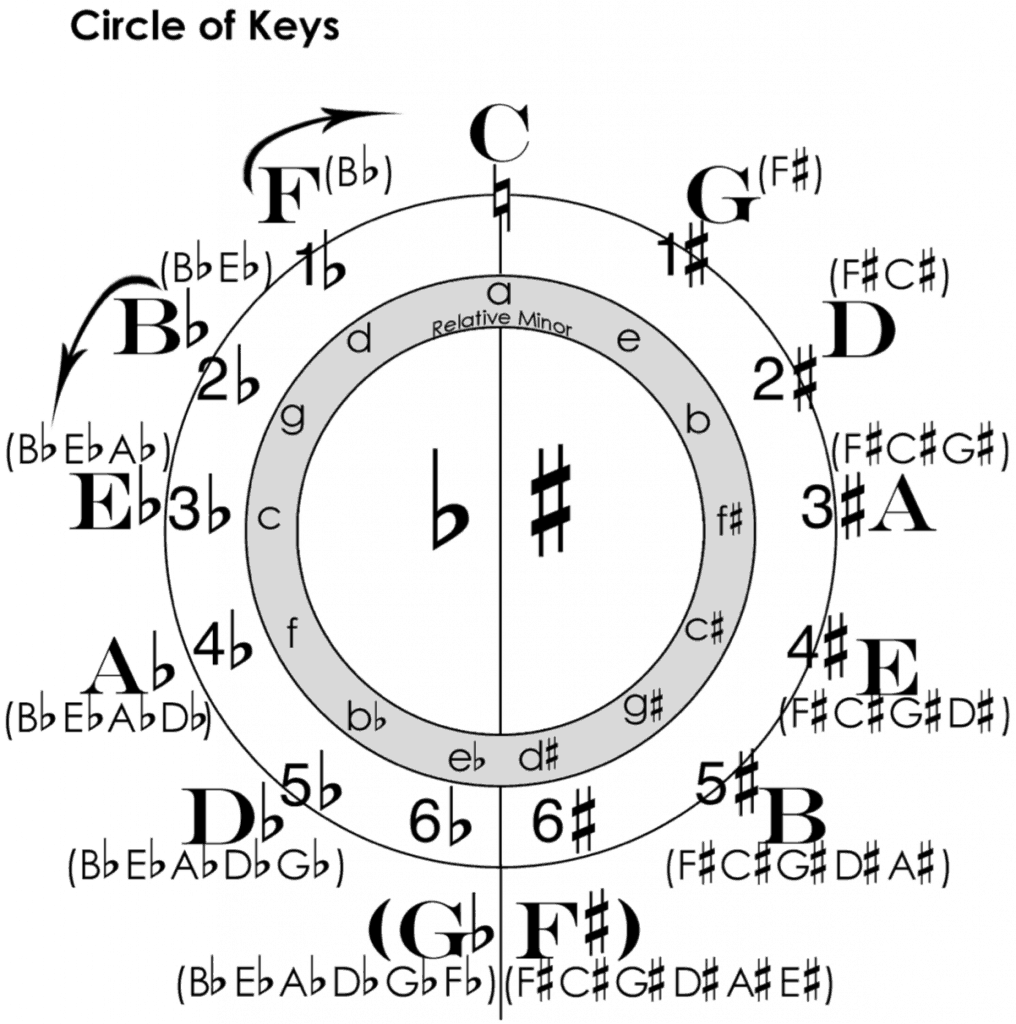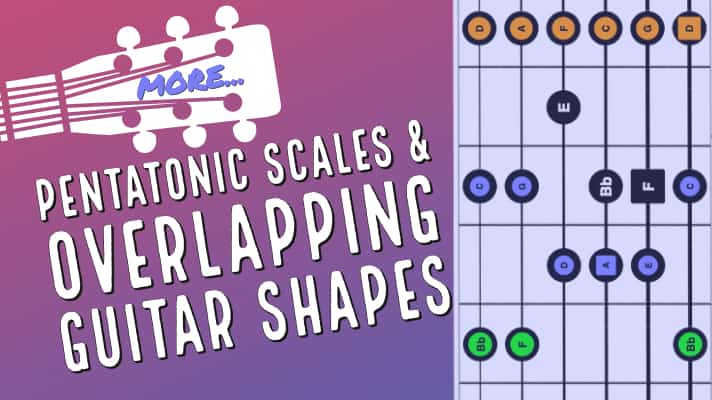As guitarists, we are notorious for learning just enough to get by and calling it a day. We’re typically trusting that only a few chords or scales will be enough to get by.
Learning guitar music theory methodically can be difficult. The way the guitar fretboard is laid out is unintuitive when compared to the piano or other instruments. This makes working through guitar lessons tedious for many players who early on just want to rock out. ….or just learn how to play a few of their favorite songs.
So today we’re going to cover 3 concepts that will level you up as a guitarist. They are extremely effective concepts that, while not uncommon, are considered solid fundamentals that every guitarist can benefit from learning.
The Circle of Fifths
The Circle of Fifths while initially daunting, is not exactly a secret held by experienced musicians.New players don’t need to pass a trial or take an IQ test to get it. Quite the opposite. It’s something you will see everywhere, even in guitar lessons designed for beginners. So why is it so underutilized by guitarists?
You’ve heard the saying “music is not difficult, it’s just unintuitive”. It’s easy to have the theory behind the Circle explained to you, but still have no idea how to use it from a creative perspective. Today I hope to put a bigger focus on what the Circle of Fifths offers to your writing as a tool that canprovide inspiration in creating interesting chord progressions around a tonal center.
Circle of 5th’s Introduction
Starting with just the letters outside the circle: At 12 o’clock you have C major. As you follow the circle clockwise you climb perfect fifth intervals until you make it all the way full circle around to C.
If you go counterclockwise you cover perfect fourths.
In addition, on the inner circle, you have the relative minor keys. Each letter on the outer circle (C’s relative minor is Am, etc). You can refer to a good visual representation of the circle to memorize this.

Great, I have a circle with some notes on it! How does that help me be a better musician?
Creative Guitar Power
The creative power of the Circle of Fifths comes from the idea that the notes which are close to our song’s key (or tonal center) have the largest number of notes in common with that key. As we go further around the circle, and further away from our key, they have fewer notes in common. We can use this to get inspiration when writing chord progressions or modulating within a song.
For example, let’s say we are writing a song in C major. Instead of thinking in terms of which chords exist within that scale; and writing the progression using roman numerals such as I – IV – V. Instead, we can look at the circle of fifths and see what options are available to us.
Starting with C at twelve o’clock. We see we have F and G right next to it. These keys only have 1 note different from the key of C. These are very safe options to use as your next chord!
Jumping Around The Circle of Keys
But, if we were to jump suddenly to 6 o’clock on that F#. It has 7 notes different from C, not a single note in common! Which is going to sound the most ‘unusual’ or ‘jarring’.
Of course, there is no right or wrong chord to jump to. This simply presents an alternative way of finding chords for your progressions that might provide some cool inspiration for you. Especially handy when you need something interesting to spice up your writing. This will lead you to places you otherwise wouldn’t have thought of. When your mindset is stuck in scale degrees and diatonic chords only your thinking can change.

The CAGED system
Because of the guitar’s inherently unintuitive fretboard layout, mapping out the entire neck can be a big challenge for new players. The CAGED system is used by many to take some very simple chord shapes that every beginner will learn, and teach you how to both move those shapes all around the fretboard and connect them together to give you a more complete picture of the guitar neck.
As the name might suggest we take the shapes for C major, A major, G, major, E major, and D major (C A G E D) and play them in their open positions, and what we are really looking at here is not the name of the chord, but at the shape, we are holding with our hands. These 5 shapes are what we call ‘transposable’ which means we can move them around the neck to create new chords.
For example, if we hold the A major chord shape, what happens if we take that shape, but move everything up 1 fret? We now have an A# major. If we take A major and move the shape up 2 frets we now are playing a B major.
So what we now have are 5 different shapes in our chordal ‘vocabulary’ which we can simply move up and down the fretboard to very easily create different chords.
But wait! There’s more.
The chords C A G E D actually connects together in sequence to further increase your ability to traverse the fretboard with confidence.
Finding the key of a song
For beginners who are learning to apply some of their easy theory knowledge to figure out how songs work, to experienced players who’ve become increasingly reliant on tablature and google to help them learn songs.
Being able to find the key of the song is a really essential skill to both give you independence as a player, and to keep your ear engaged.
Figuring out the key of a song can be a bit of a process and there isn’t a single methodical way to do it, it’s more just the application of various skills and pieces of knowledge that come together to help you get the overall picture of the song which will then clearly reveal what the key is.
The Continued Guitar Journey
Of course, in the wonderful world of guitar, there are always going to be new things to learn, new concepts to approach, and ways to improve. But once you have these 3 powerful musical tools in your repertoire you will be a stronger and better guitarist for it.
Craig Smith is a professional Guitarist, Teacher, and Writer living in Sanford, Florida. Craig has taught guitar lessons, performed 200+ gigs per year for nearly 30 years, and published 4 guitar instructional books. When he’s not gigging or writing, you may find him by the pool with his wife Celeste, 4 Chihuahuas, and a drink. 🎸




